The Giant’s Causeway in Northern Ireland is one of the most incredible and fascinating places I have ever visited. It consists of a natural rocky outcrop on the northeast coast of Ireland about 3 km north of the town of Bushmills, County Antrim. The aura of mystery that surrounds the entire coastline leaves you stunned. So does the sound of the Atlantic Ocean waves crashing against these beautiful rock formations.
Declared a UNESCO World Heritage Site in 1986, the Giant’s Causeway is famous for its stratified basalt rocks of volcanic origin. There are more than 50,000 columns which, with their unique hexagonal structure, create a striking structure that has inspired ancient legends over time. The entire coast is a national nature reserve managed by the National Trust. A truly impressive landscape that I was lucky enough to visit during the summer of 2019.
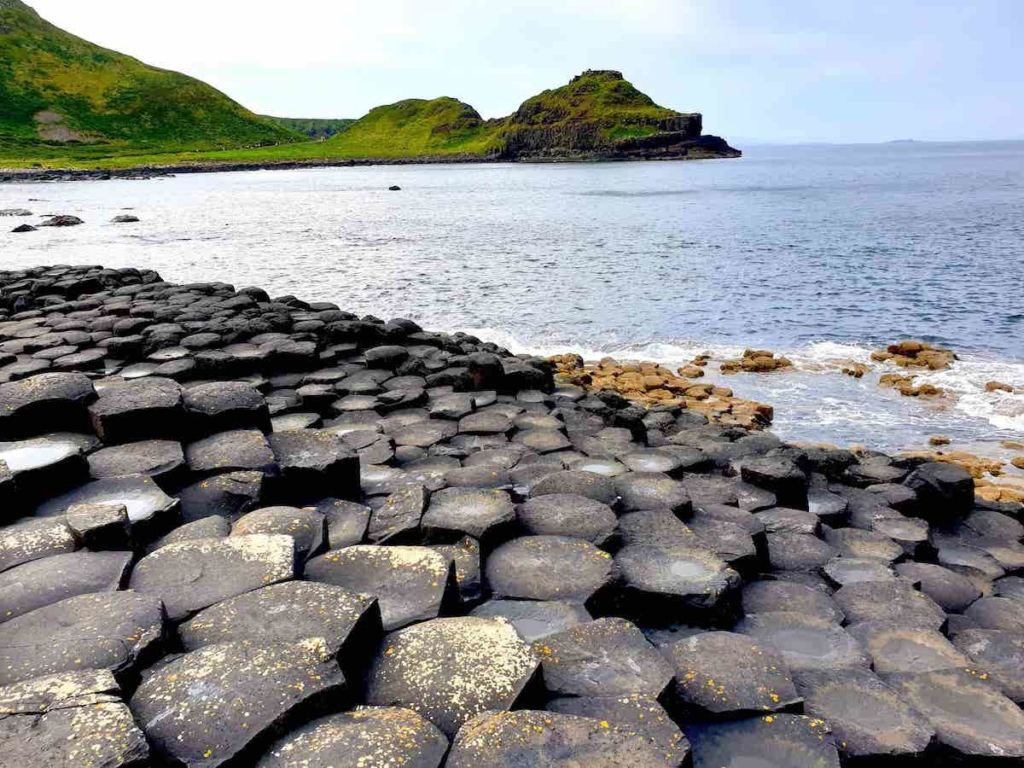
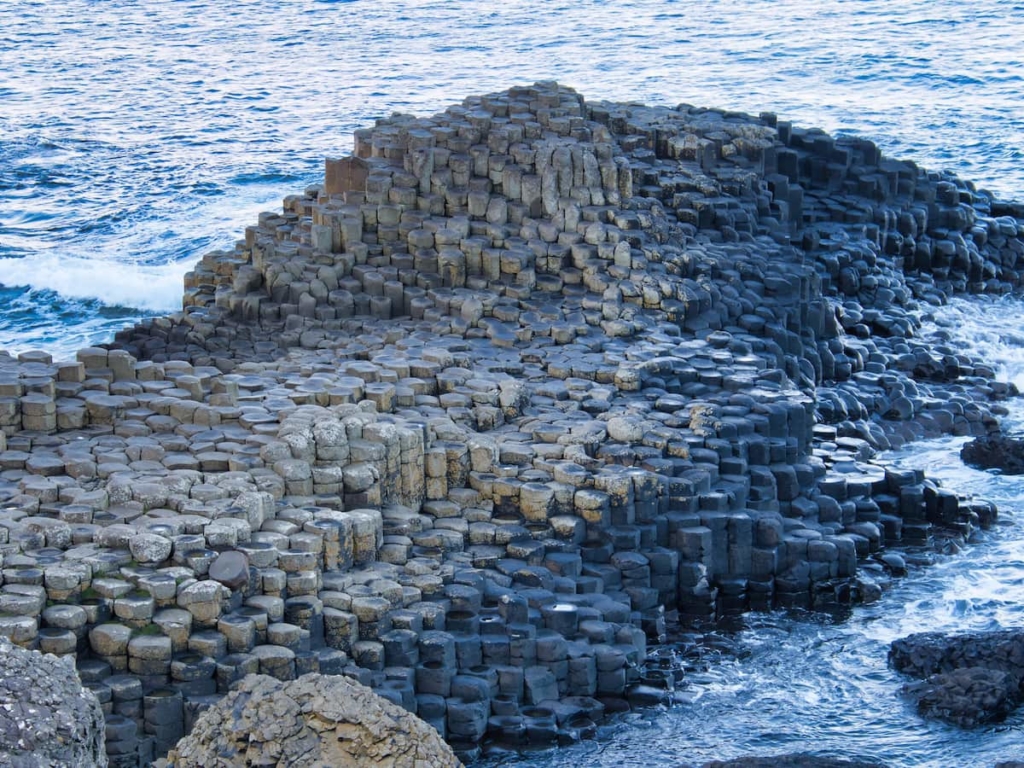
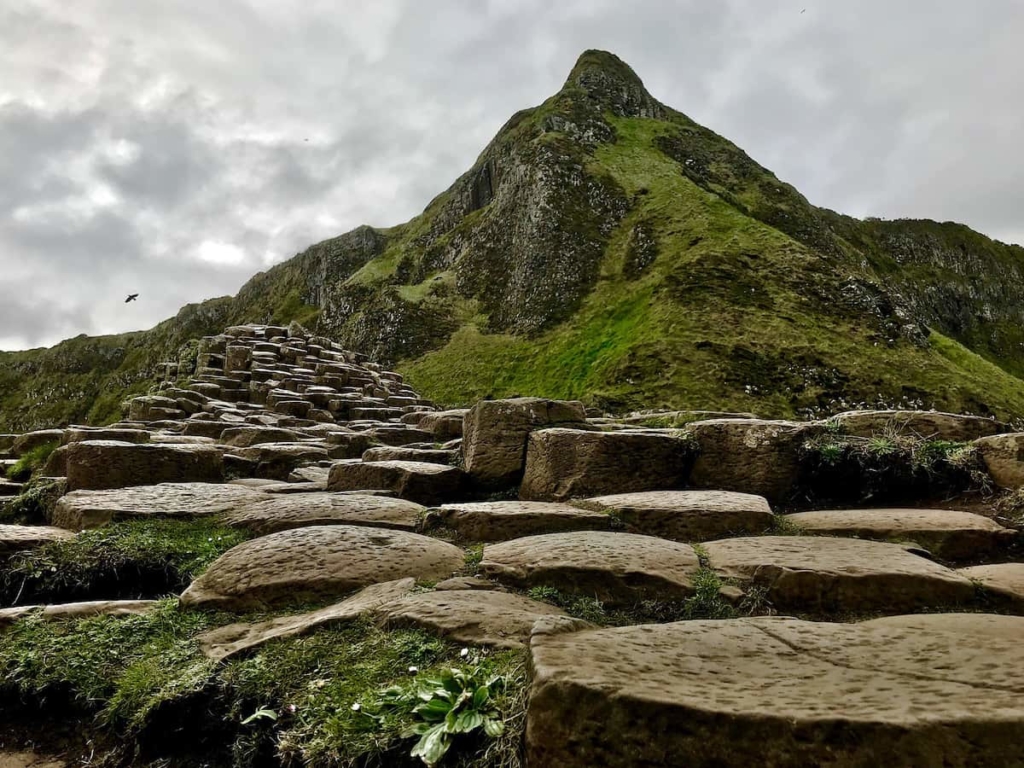
My visit to the Giant’s Causeway in Northern Ireland
The best time to visit is certainly during spring and summer, from April to September. My visit in Northern Ireland to the Giant’s Causeway was in the middle of August. The weather is highly unpredictable and can change from one minute to the next and the wind is guaranteed on the cliffs! Although in August, the temperature was around 20 degrees. So watch your clothing, dress in layers and wear comfortable walking shoes. Also, I advise you to leave your umbrella at home because the wind would make it fly ahahahah! so if you decide to do a tour in Ireland I suggest you to invest in a good mackintosh. Trust me, you will thank me later ;-).
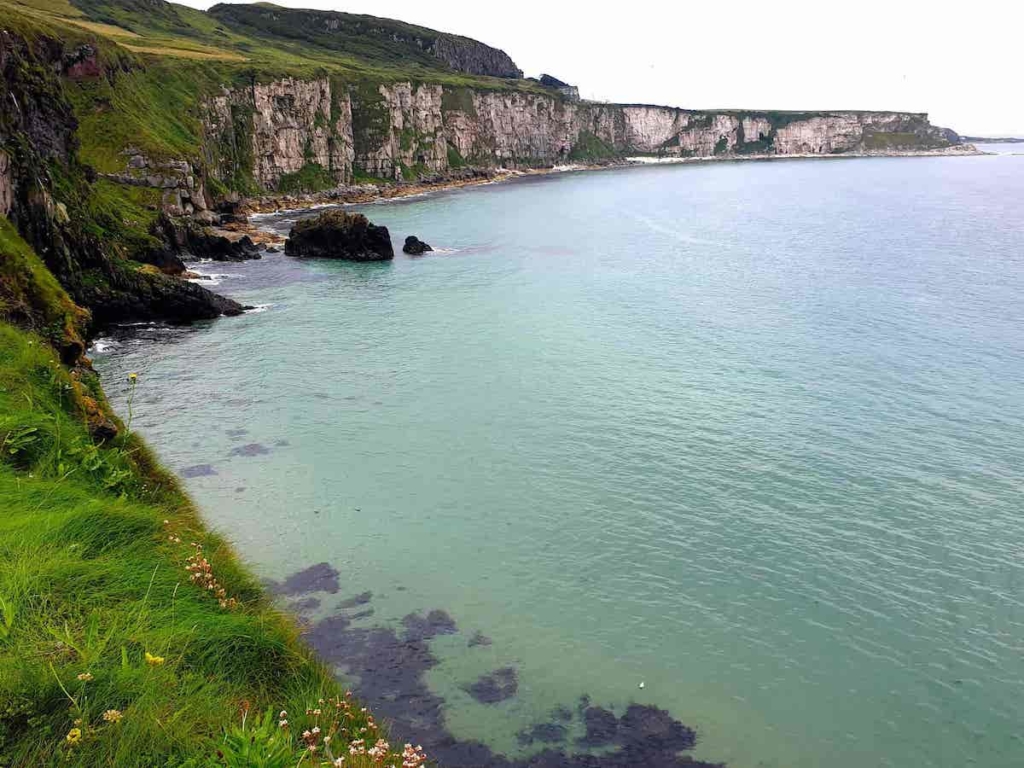
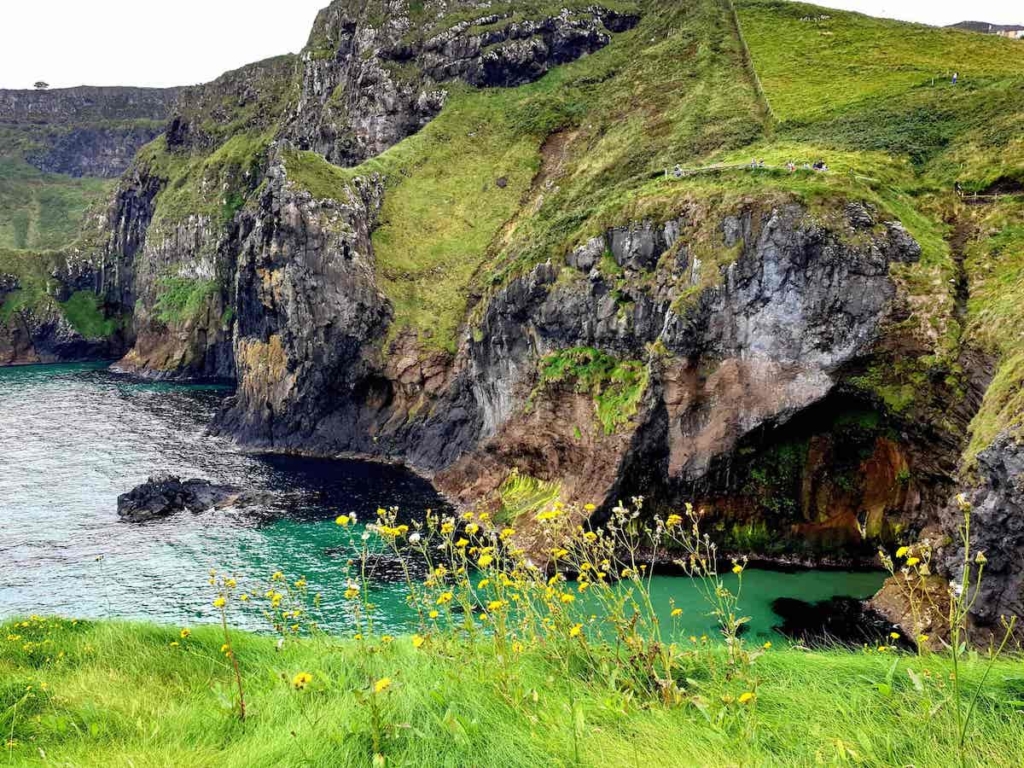
Origin of the Giant’s Causeway
In short, about 60 million years ago, the powerful forces of tectonic movements pushing North America and Europe apart opened a fissure in the earth’s crust on the western edge of what is now Britain. Molten basalt poured out of it, and as it cooled and solidified it formed thousands of regularly symmetrical, mostly hexagonal, columns.
The peculiar shape of these rocks has given rise to numerous legends that have been passed down to the present day.
Giants’ Legend
The legend about the origin of the Giant’s Causeway that amused me the most is the one about two giants at war with each other, Finn (in Northern Ireland) and Angus (in Scotland). The two giants, in order to meet and fight, were building a path using basalt columns so as to connect Ireland and Scotland. During the construction of the trail Finn, due to enormous fatigue, fell into a deep sleep before reaching Scotland. His wife Oonagh, knowing that Angus would be arriving soon, covered her husband with a sheet to hide him. When Angus arrived, Oonagh convinced him that under the sheet there was their child. Angus, terrified by the size of Finn’s son, imagined his rival to be terribly big and powerful. He decided to run away, destroying the trail behind him to avoid being chased.
How to get/reach to Giant’s Causeway
To visit the Giant’s Causeway I left from Dublin. Many shuttles leave from Belfast or Dublin for different tours with various stops. As suggested by some friends, I booked a tour departing from Dublin that made several stops: Belfast, Giant’s Causeway, Carrick A-Rede-Rope Bridge, Dark Edge and Dunluce Castle. A great tour that I recommend to anyone departing from Dublin who wants to take a day trip to see Belfast and the surrounding area. If you want to have a look at the tour I did I leave the link here.
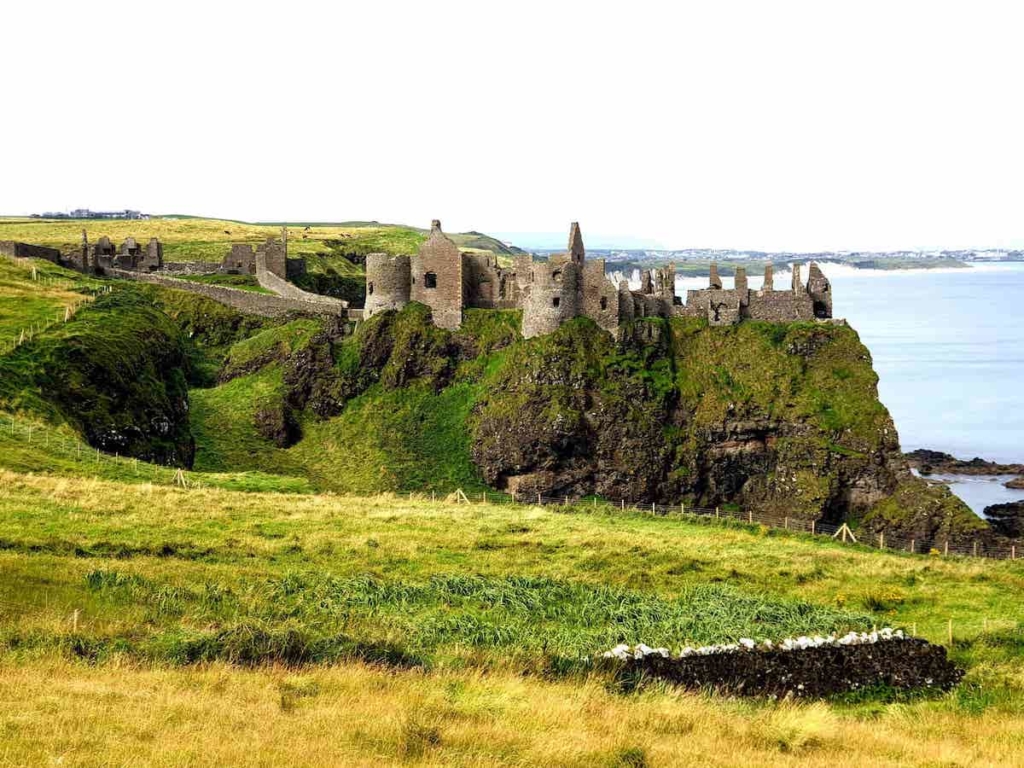
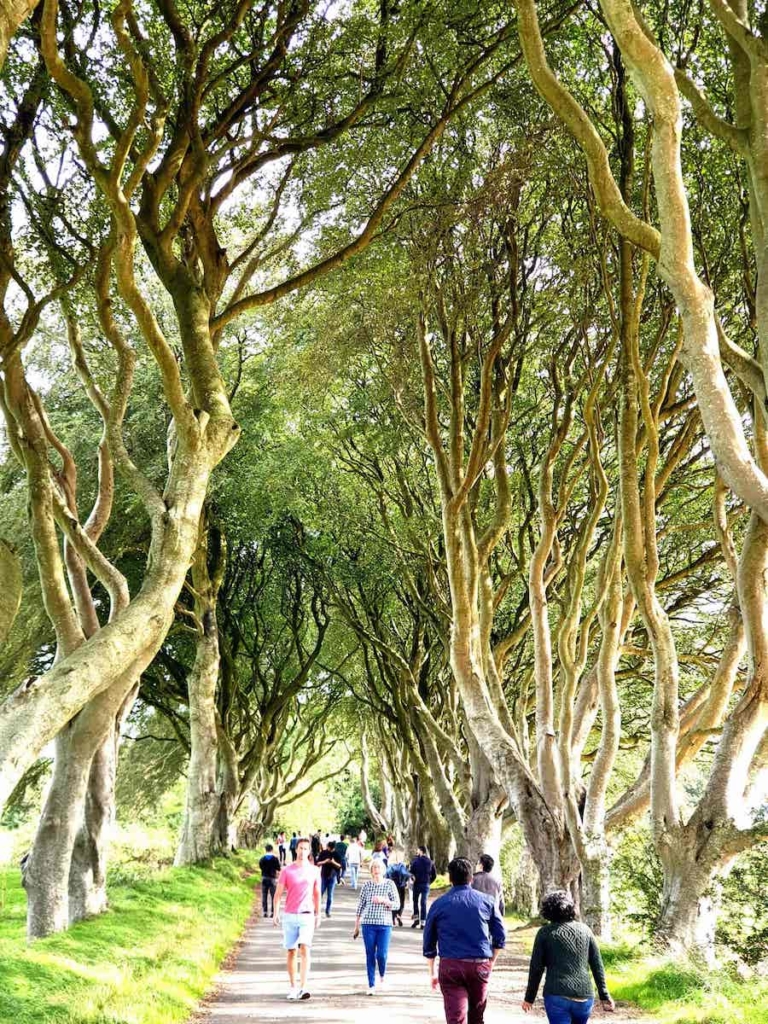

However, if you prefer to be freer and not be bound by fixed timetables, you can rent a car. From Belfast, it takes about 1 hour and 25 minutes and from Dublin about 3 hours and 45 minutes. About the parking, keep in mind that it will cost quite a lot!
Another option for reaching the Giant’s Causeway is to use public transport. Both private and regional lines run to the Giant’s Causeway. You can check this out at translink.co.uk.
And finally, another nice option is to use the Giant’s Causeway&Bushmills Railway. This is a small train that connects Bushmills to the Giant’s Causeway along the coast. The breathtaking views are guaranteed, although it’s not easy to combine connections to get there and back. So I suggest you book everything in advance and look carefully at the train schedules.
The 4 Trails to the Giant’s Causeway
Once at the coast to get to the peculiar polygonal rocks, the most important point of interest for tourists, there are 4 paths.
They differ in length and also in how easy they are to walk. Some are also accessible with pushchairs and therefore recommended for families with children or for elderly or disabled people. Others, on the other hand, are more difficult to negotiate due to the steepness and winding nature of the “wild” path. Let’s discover them together!
The Blue Trail
The blue trail is certainly the shortest and easiest to walk. The road here is well paved so it is not a steep path made of natural stones if it rains you will avoid slipping and if you have children it might be the safest. If you prefer, you can also take the bus, otherwise, it is only a 25-minute walk to the most interesting area, the basalt columns. This route is accessible with pushchairs.
The Green Trail
This doesn’t take you directly to the basalt columns, but rather to the cliffs to the left of the Giant’s Causeway, where you’ll enjoy breathtaking views. This trail takes about 1 hour 30 minutes to walk and is of medium difficulty but is accessible with a pushchair.
The Red Trail
This trail is not accessible with buggies and is the most scenic in my opinion. It starts with a fairly steep climb along the coast followed by about 160 steep steps down to the Giant’s Causeway (I recommend holding on to the handrails, they can be slippery as they are made of stones and mud).
The Yellow Trail
This is the most difficult path, the length of which is not defined, as it continues for 50 km along the Irish coast to Dunluce Castle. For true hiking enthusiasts! This trail includes the upper parts of the Green and Red Trails but does not descend to the Giant’s Causeway.
I hope you found some useful information in my article! I would love it if you would share with me other great places you have visited or that is on your list of places to visit. Leave them in a comment!
A big hug, Tonia.




